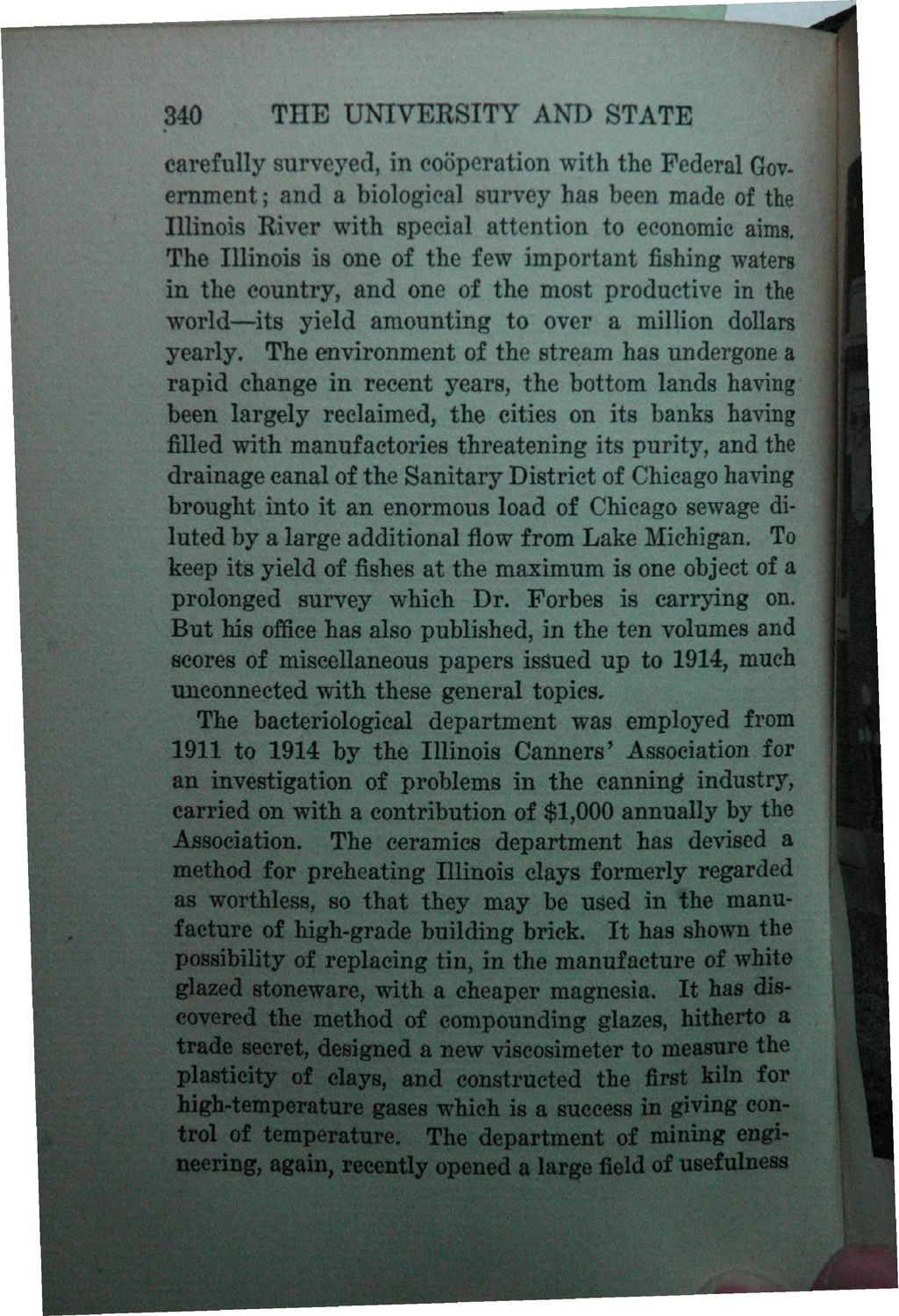| |
| |
Caption: Book - History of the University (Nevins)
This is a reduced-resolution page image for fast online browsing.

EXTRACTED TEXT FROM PAGE:
340 THE UNIVERSITY AND STATE carefully surveyed, in cooperation with the Federal Goveminent; and a biological survey has been made of the Illinois River with special attention to economic aims. The Illinois is one of the few important fishing waters in the country, and one of the most productive in the world—its yield amounting to over a million dollars yearly. The environment of the stream has undergone a rapid change in recent years, the bottom lands having been largely reclaimed, the cities on its banks having filled with manufactories threatening its purity, and the drainage canal of the Sanitary District of Chicago having brought into it an enormous load of Chicago sewage diluted by a large additional flow from Lake Michigan. To keep its yield of fishes at the maximum is one object of a prolonged survey which Dr. Forbes is carrying on. But his office has also published, in the ten volumes and scores of miscellaneous papers issued up to 1914, much unconnected with these general topics. The bacteriological department was employed from 1911 to 1914 by the Illinois Canners' Association for an investigation of problems in the canning industry, carried on with a contribution of $1,000 annually by the Association. The ceramics department has devised a method for preheating Illinois clays formerly regarded as worthless, so that they may be used in the manufacture of high-grade building brick. It has shown the possibility of replacing tin, in the manufacture of white glazed stoneware, with a cheaper magnesia. It has discovered the method of compounding glazes, hitherto a trade secret, designed a new viscosimeter to measure the plasticity of clays, and constructed the first kiln for high-temperature gases which is a success in giving control of temperature^ The department of mining engineering, again, recently opened a large field of usefulness
| |